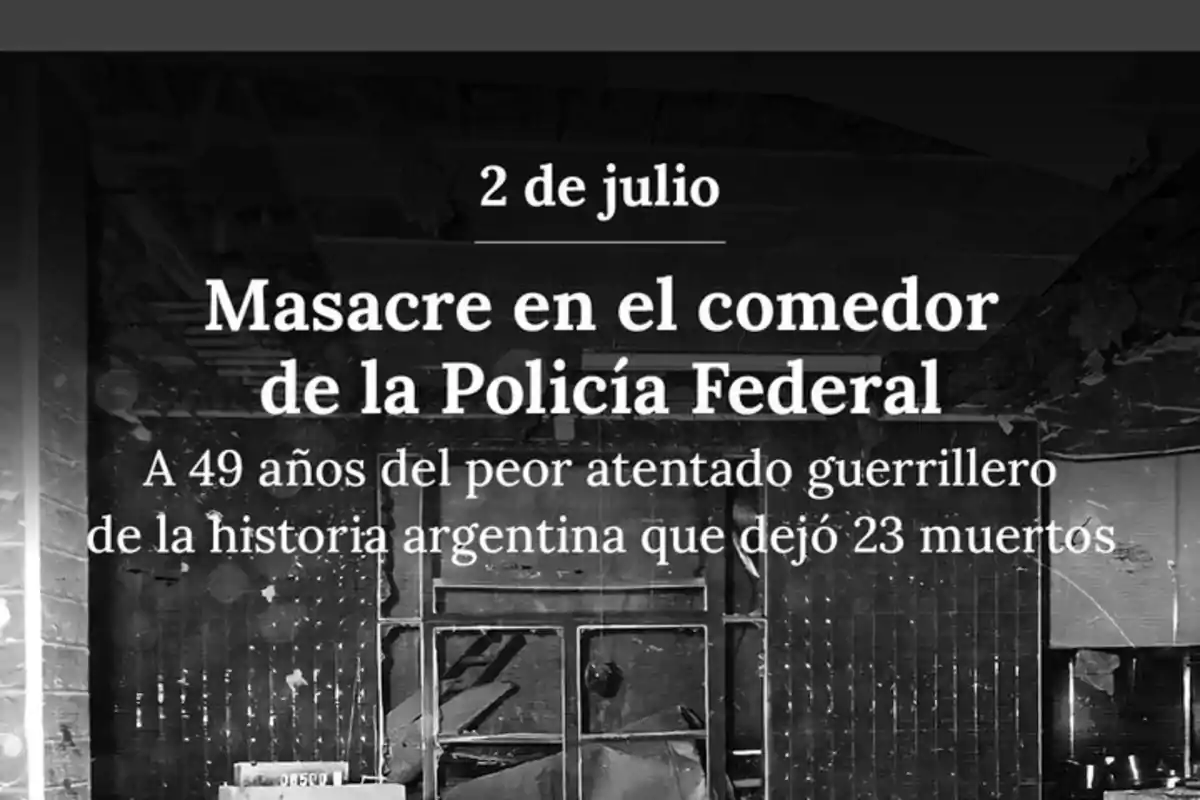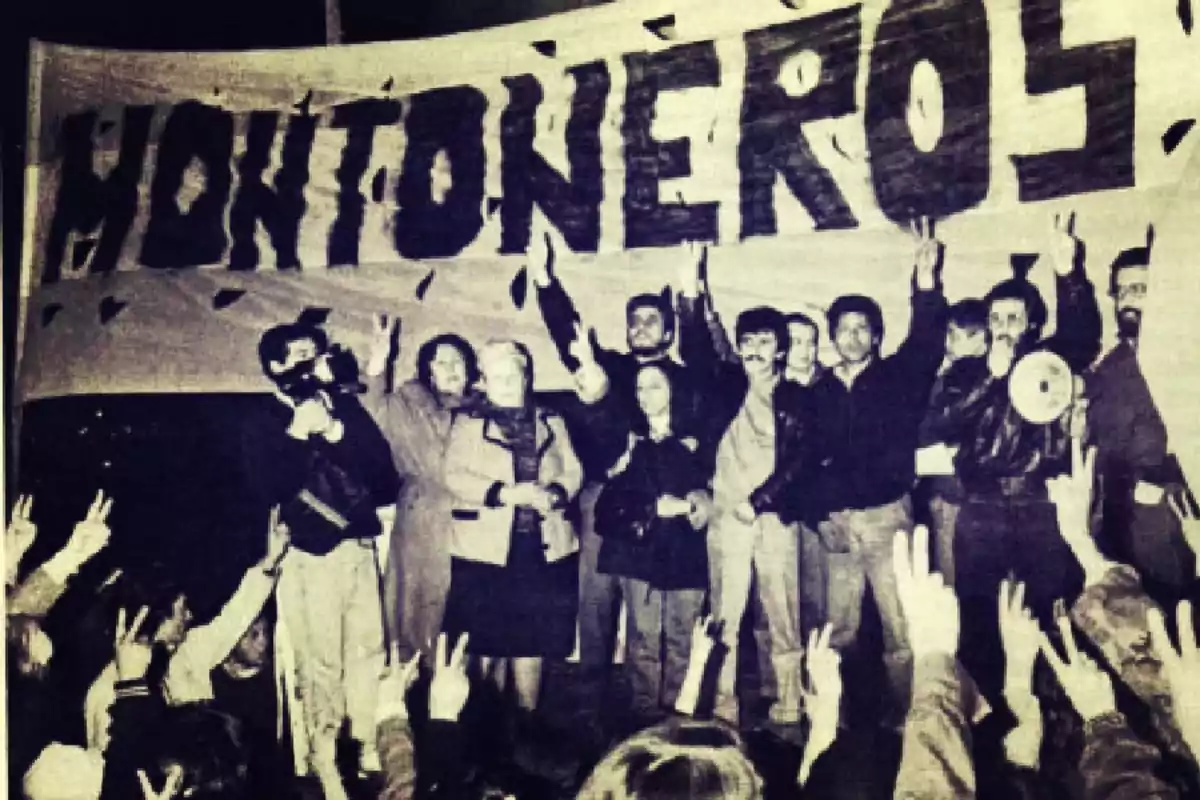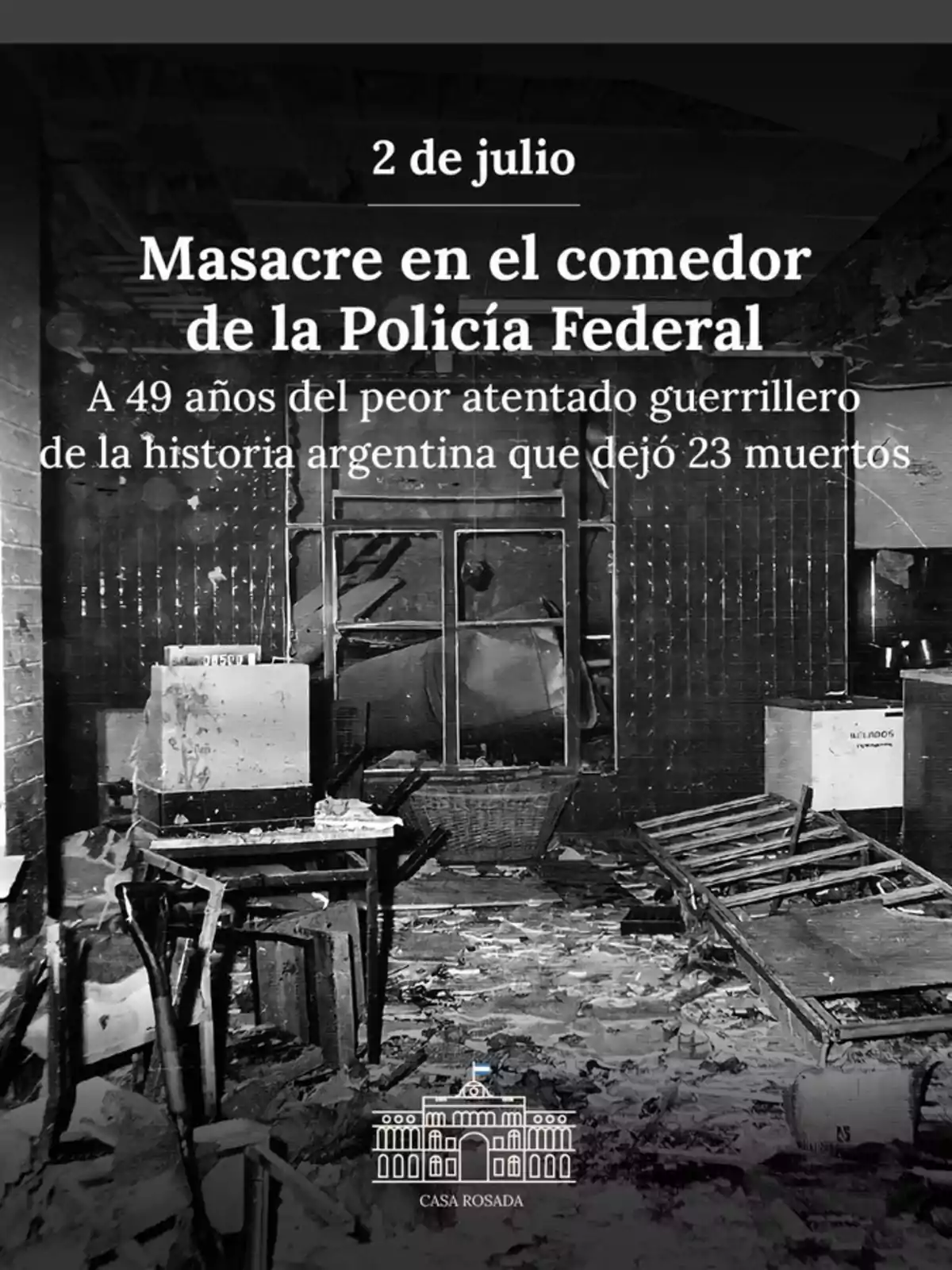
The Government commemorated one of the worst terrorist attacks in Argentina's history
This is about the massacre in the Federal Police dining hall, carried out by the Montoneros on July 2, 1976
July 2, 1976, was recorded as one of the darkest days in Argentine history. That afternoon, a bomb placed by the left-wing terrorist organization Montoneros exploded in the dining hall of the Federal Security Superintendency, at 1431 Moreno Street in the City of Buenos Aires, causing the death of 23 people and leaving another 110 injured.
Nearly five decades after the attack known as the "Dining Hall Massacre", the Federal Judiciary recently reopened the case investigating the Montoneros leadership for their responsibility in what was the deadliest terrorist attack on Argentine soil before the AMIA attack.
In this context, this Saturday, July 5, a demonstration will be held in commemoration of the 23 people murdered in the massacre. The march will begin at 11 a.m. at the intersection of San Juan and Entre Ríos avenues and will end in front of the building at 1431 Moreno, where the attack took place.

During this march, the head of the Buenos Aires city government, Jorge Macri, will be draftedon to change the name of the Rodolfo Walsh subway station located next to the dining hall, since Walsh was one of the perpetrators of the violent attack.
Next Saturday, families, survivors, and society as a whole demand justice and remembrance for one of the most heartbreaking tragedies caused by left-wing terrorism in Argentina.
The Montoneros attack
The attack occurred at 1:20 p.m., when a powerful explosion, caused by a "Claymore"-type bomb loaded with TNT and steel balls, shook the dining hall where dozens of people were having lunch. The blast wave destroyed tables, chairs, and walls, turning the space into a hell of screams, smoke, and shrapnel. The impact was so brutal that some victims were mutilated or unrecognizable.
After the attack, José María Salgado was identified, an agent infiltrated by Montoneros who, after entering the dining hall with a briefcase loaded with explosives, had lunch at the site and left the building minutes before the explosion. The bomb had been specifically designed to maximize damage, turning fragments of the furniture into lethal projectiles.

Among the fatalities was Josefina Melucci de Cepeda, a YPF employee who was simply having lunch with a friend. Seven of the deceased did not even have ties to the Federal Police, revealing the indiscriminate nature of the attack.
Although Montoneros justified it as retaliation against the repression of the dictatorship, the massacre affected innocent civilians and exposed the brutality of guerrilla actions.
For more than 40 years, the judicial case did not advance significantly. In 2006, Judge Servini ordered its closure. However, in June 2024, after the efforts of organizations representing the victims, Chamber I of the Federal Court ordered the case to be reopened to investigate the responsibility of the Montoneros high command.
The complaint also targets Mario Firmenich, Marcelo Kurlat, Horacio Verbitsky, Laura Sofovich, Miguel Ángel Lauletta, Norberto Habegger, Lila Victoria Pastoriza, and other leaders of the guerrilla group.
More posts: